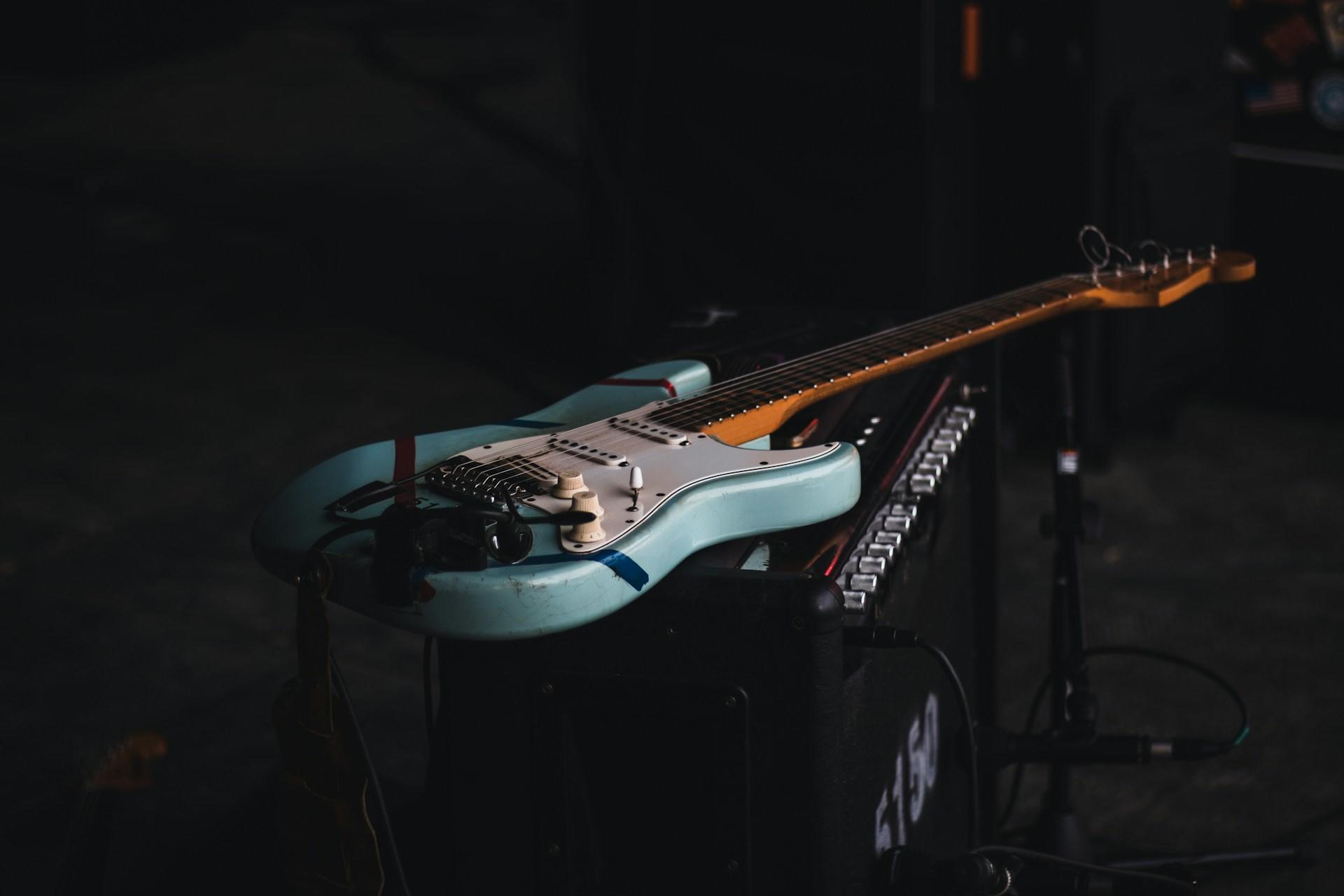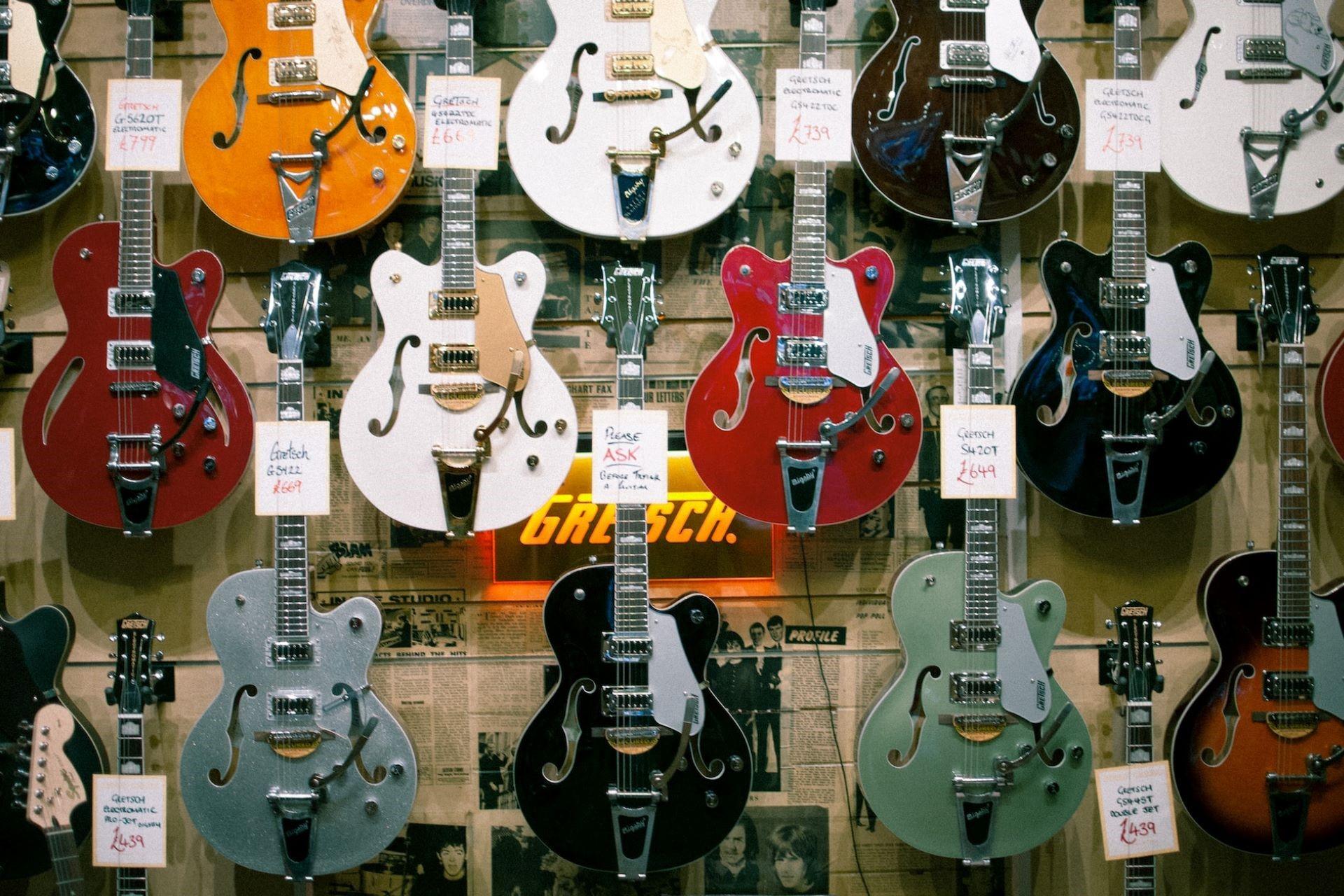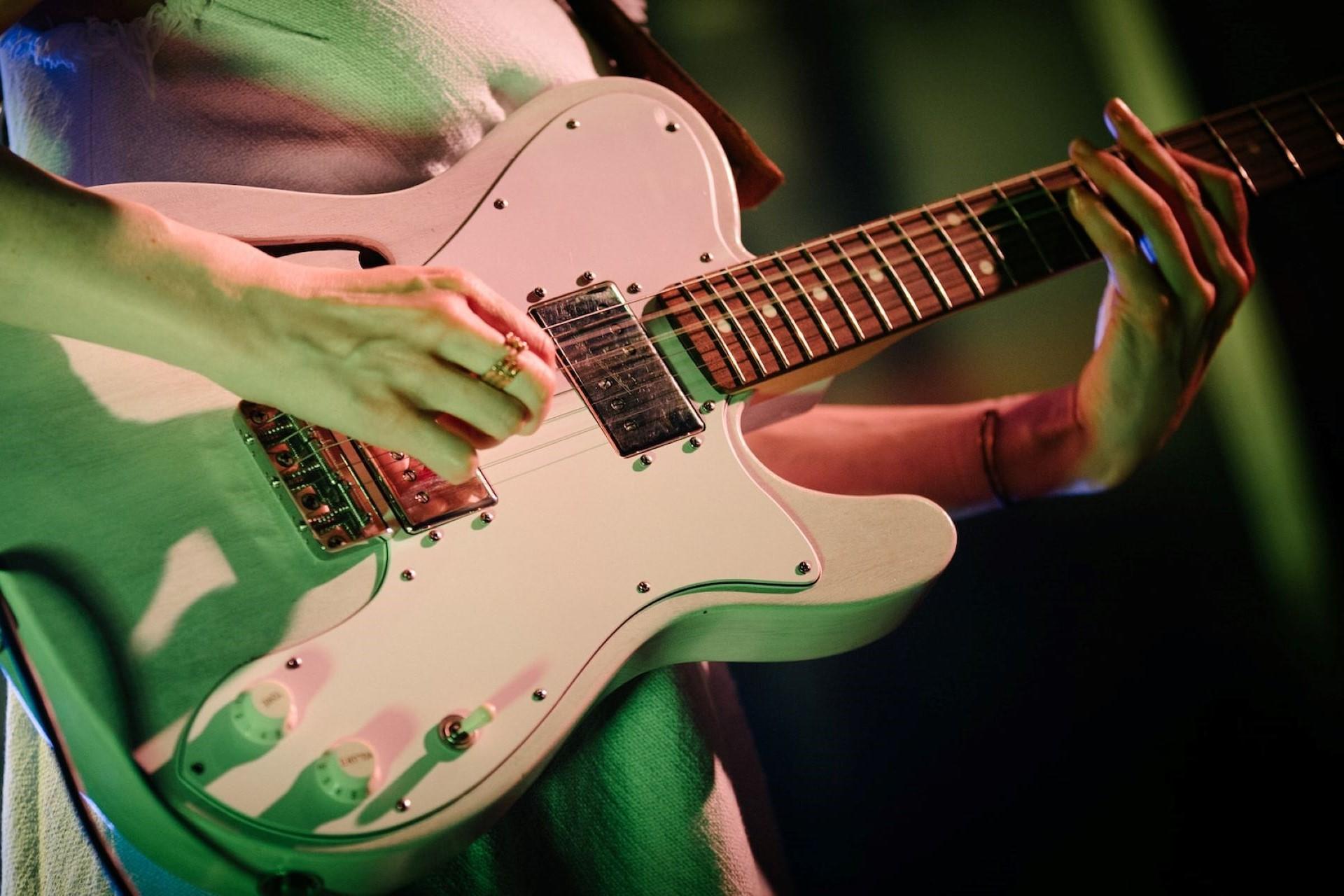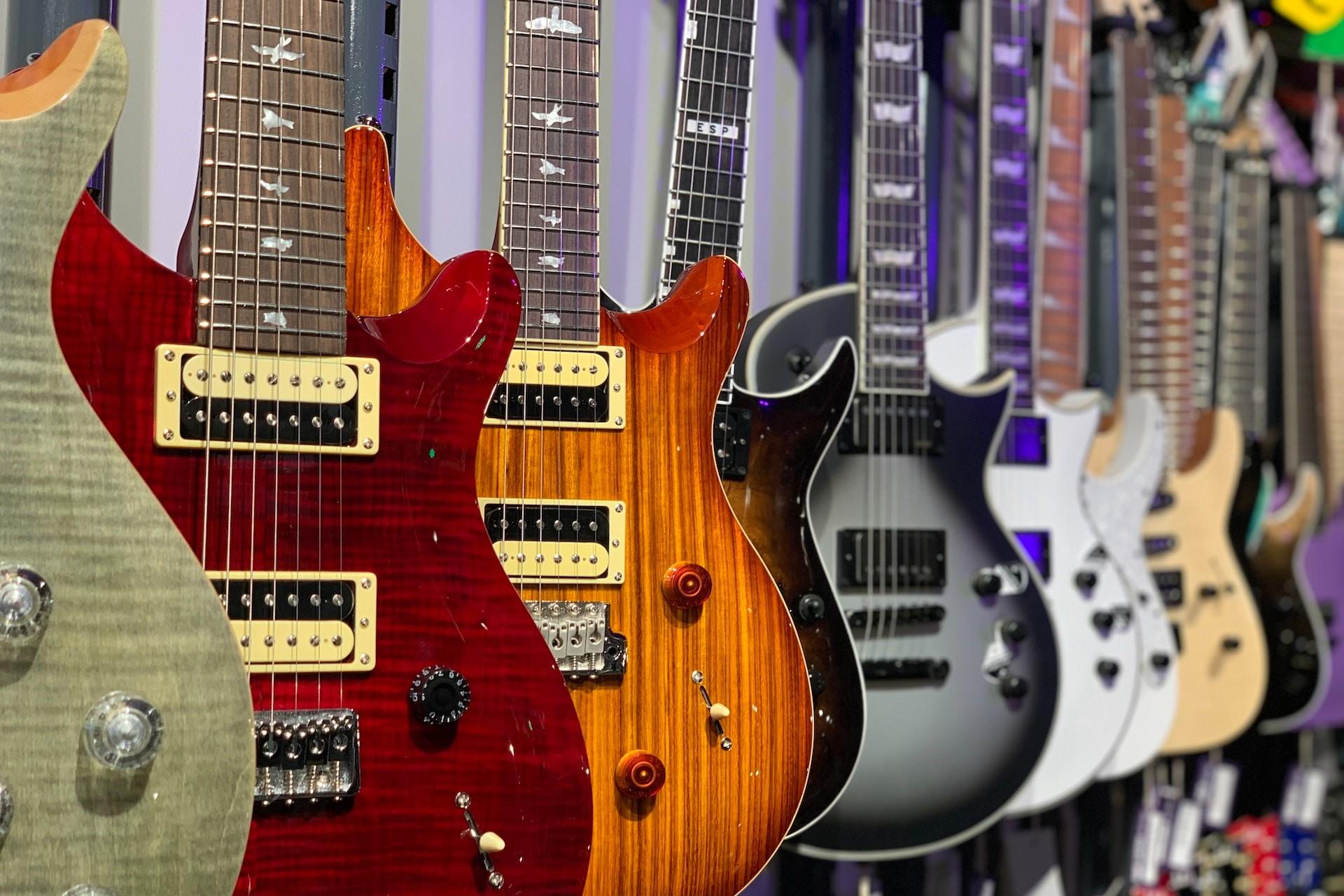Whether you already play an acoustic guitar or classical guitar or are a beginner who wants to start with an electric guitar, buying electric guitars can be a fairly daunting and tricky endeavour.
It all looks so easy, especially when you watch your favourite artists playing the guitar, but both learning to play and choosing the right instrument isn't something to be taken lightly.
Buying a guitar and everything else you need is complicated. Electric guitars make this even more complicated because the guitar itself is only technically half the instrument. With electric guitars, you need an amp and cables to get everything out of the instrument and you can't have one without the other.
It's both an advantage and disadvantage that there are so many different electric guitars available and a great second-hand market for them, too. You'll be spoilt for choice and can find the right electric guitar for you quite easily, but only once you've worked out what you're looking for.
Fortunately, we're here to help and in this article, we'll be looking at buying an electric guitar, how much you should pay for it, and what kind of guitar you should be looking for.

The Average Cost of a Beginner's Electric Guitar
When buying your first guitar, you should set your budget relative to your level. There's no point in spending a fortune on your first electric guitar if you can't play very well. An expensive guitar won't make you sound amazing, even if the instrument itself sounds great in the hands of better guitarists.
If you already play an acoustic guitar or a classical guitar very well, then you can invest in something better than an entry-level electric guitar, but we still wouldn't recommend something like a Custom Shop Fender Stratocaster or a vintage Gibson Les Paul, which can both set you back tens of thousands of dollars!
Brand-new entry-level electric guitars tend to retail for around $250, but this is just for the guitar. If you're buying your very first electric guitar, then you'll also need things like:
- an amp
- cables
- picks/plectrums
- a case/gig bag
- spare strings
You can find the most basic of packages with these for around $350 and while you won't be playing the best electric guitar or using the best amp, most of them are fairly serviceable options for somebody looking for their first musical instrument.
However, if you're fairly certain you're going to be playing guitar for a while (especially if you already play another musical instrument), then it might be worth investing in a more expensive electric guitar that you won't outgrow too quickly.

Amps are also an investment and while some of the cheapest start at around $100, you'll find most are either tiny travel amps or not worth your time.
Again, adjust your budget relative to your level and the electric guitar that you invest in. After all, an electric guitar is only as good as the amp it's being put through so if you pay for a decent guitar, you'll need a decent amp, too.
There are also different amps for different situations. You wouldn't use the same amp on stage as you would practising at home, etc. so keep that in mind when doing your research.
As with everything in the electric guitar market, you can often find a good deal if you look for second-hand guitars and equipment. There are websites and classified ads both online and offline with people selling gear and guitars.
Why You Should Choose an Electric Guitar
Almost every guitarist will tell you that their electric guitar was worth the price. When you buy your first guitar, however, the risk of disappointment is much greater because you're less likely to know what you're looking for and beginner electric guitars aren't the highest quality instruments.
Learning to play an electric guitar is also quite a tricky endeavour and it's much easier to get frustrated with your new guitar if you're struggling to play it. You can make things a little easier on yourself by investing in the right equipment and useful tools and accessories like a guitar tuner and a metronome. Nowadays, both of these are also available as smartphone apps.

You can also invest in a capo, effects pedals, and plenty of other electric guitar paraphernalia, but be warned, it's a slippery slope once you get started and you may find that you're spending far more money than you initially planned on all this stuff!
Keep in mind that your brand-new electric guitar is a good investment if you intend to regularly play it and practise with it. Even if you own other guitars, you don't play an electric guitar like you would a folk guitar or a classical guitar so there are certain techniques you can only practise on your electric.
Electric guitars are versatile instruments for a range of musical genres like rock, pop, metal, blues, etc. and if you're interested in joining a band, it's far more easy to find one if you play an electric guitar.
How Much Do Other Electric Guitars Cost?
The price range for electric guitars will likely astound you. Prices can go from $250 for an entry-level guitar for beginners to $2,000 for the kinds of guitars professionals use. However, you can also get custom guitars from brands like Fender, Gibson, and PRS that can easily cost over $10,000!
The price of an electric guitar depends on several factors. The good thing is that most guitars are fairly durable and even with regular use (and gigging), you can expect it to last a lifetime if you take care of it and regularly get it maintained.
The materials, electronics, finish, shape, and construction will all affect the price of your electric guitar.
The Wood
Since wood affects tone and playability, guitarists are naturally willing to pay more for guitars made from certain kinds of wood. Maple, rosewood, and mahogany are all popular choices, but you'll see other woods used, especially in cheaper guitars. The wood used for the body of a guitar will affect its weight and tone as well as the sustain; how long notes will ring out for.
The wood used for the neck and fingerboard is also important as these can affect playability. Fingerboards tend to use woods like maple and rosewood, with the former being much lighter in colour than the latter.
The Electronics
The electronics will also affect the price of a guitar and when you're looking at two electric guitars that look almost identical, the price difference might be down to the pickups or even the wiring. The pickups are what convert the movement in the strings into an electric current that can be amplified. They sit underneath the strings on the body of the guitar and different ones have different properties.
The Shape
Different shapes of electric guitar will also affect the price with more complicated shapes tending to cost more. The most "standard" shape of an electric guitar is likely the one that's used by Fender for the Stratocaster models and has been widely adopted by many other manufacturers, especially for entry-level guitars. The shapes of the Fender Telecaster and Jazzmaster models are also often copied.
Gibson guitar shapes have also inspired many electric guitars manufacturers and you can find electric guitars for all budgets with similar bodies to that of the Les Paul, SG, Flying V, etc.

The Finish
Guitarists are fairly vain creatures, especially when it comes to electric guitars. It's not just the sound, but the look, and many will pay a premium for a beautiful finish on their guitar.
While black goes with everything and many will argue looks incredibly cool on electric guitars, you can get many popular electric guitar models in almost any solid colour you can imagine or even with a burst or sunburst effect, which uses multiple tones and shades.
Fancier finishes tend to cost more and if you want something really special, you can even pay a premium from certain manufacturers for a custom model in the colours you want, but this can cost you tens of thousands of dollars!
The Brand
Like with other products, brand recognition comes at a cost. The bigger brands like Fender and Gibson are household names, though they still offer a range of guitars for a range of budgets. However, neither of these brands offers any electric guitars that we'd say are within the price range of absolute beginners.
Fortunately, both of these brands (and many others) tend to have a budget brand. Fender recreates their popular Stratocaster, Telecaster, Jazzmaster and other electric guitars for those on a budget through the Fender Squire Brand.
You can find cheaper versions of Gibson guitars like the Les Paul, Firebird, SG, Explorer, etc. being sold by the Epiphone brand. Epiphone is an interesting case, though, because it acts both as Gibson's cheaper counterparts and a brand in its own right, with a range of guitars that are exclusive to it.
Buying Second-hand Electric Guitars
The quickest and easiest way to save money on buying an electric guitar, especially a vintage model, is by buying second-hand.
It's easier to get a good deal if you know what you're looking for, but buying second-hand electric guitars isn't as risky as you might think.
Most guitarists are so precious about their instruments that they're very upfront and honest about any imperfections or damage when selling and you just need to look on second-hand sites to see that they'll even put closeup photos of the tiniest dings and imperfections on a listing to show potential buyers.

If you're still nervous about the condition of the instrument, we'd recommend buying second-hand electric guitars locally so you can see and try the instrument before you buy it.
When you buy second-hand instruments from your local music store or shop, you'll have the option to try them out, but when buying online, this isn't always an option.
The main issue with certain used electric guitars is that very popular models, especially vintage guitars, don't tend to get cheaper. Instead, certain rare and popular models will likely increase in price over time so don't think you'll necessarily get a cheap electric guitar.
In some cases, your dream guitar mightn't be available locally and you'll have to take that risk. Try to use trusted websites and sellers. Nowadays, you can always ask the seller to call you on a video call and play the instrument so that you can see that it all works.















